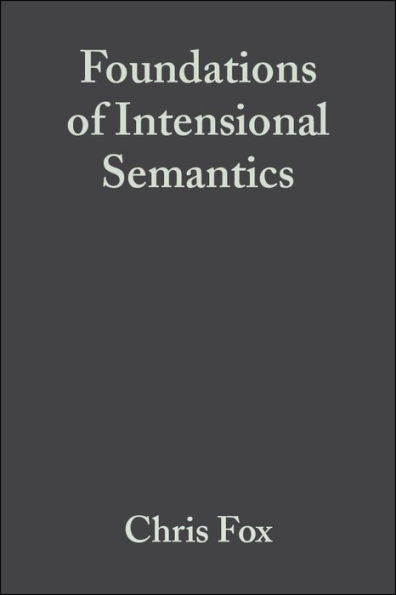Table of Contents
Preface.
1. Introduction.
1.1 Montague’s Intensional Logic.
1.2 Architectural Features of IL.
1.3 Structure of the Book.
2. Alternative Approaches to Fine-Grained Intensionality.
2.1 An Algebraic Representation of Possible Worlds Semantics.
2.2 Two Strategies for Hyperintensionalism.
2.3 Thomason’s Intentional Logic.
2.4 Bealer’s Intensional Logic.
2.5 Structured Meanings and Interpreted Logical Forms.
2.6 Landman’s Data Semantics.
2.7 Situation Semantics and Infon Algebras.
2.8 Situations as Partial Models.
2.9 Topos Semantics.
2.10 Conclusion.
3 Intensions as Primitives.
3.1 A Simple Intensional Theory.
3.2 Types and Sorts.
3.3 Abstraction and Application.
3.4 PT: An Untyped Theory.
3.5 Intensionality in FIL and PTCT.
3.6 Conclusions.
4. A Higher-Order, Fine-Grained Intensional Logic.
4.1 Introduction.
4.2 Fine-Grained Intensional Logic.
4.3 A Semantics for FIL.
4.4 Conclusion.
5. Property Theory with Curry Typing.
5.1 PTCT: A Curry-Typed Theory.
5.2 PTCT: Syntax of the basic theory.
5.3 A Proof Theory for PTCT.
5.4 Example Proof.
5.5 Intensional Identity v. Extensional Equivalence.
5.6 Extending the Type System.
5.7 A Model Theory for PTCT.
5.8 Types and Properties.
5.9 Separation Types and Internal Type Judgements.
5.10 Truth as a Type.
5.11 Conclusion.
6. Number Theory and Cardinaltiy.
6.1 Proportional Cardinality Quantifiers.
6.2 Peano Arithmetic.
6.3 Number Theory in FIL.
6.4 Proportional Generalized Quantifiers in FIL.
6.5 Number Theory in PTCT.
6.6 Proportional Generalized Quantifiers in PTCT.
6.7 Presburger Arithmetic.
6.8 Presburger Arithmetic in PTCT.
6.9 Conclusions.
7. Anaphora and Ellipsis.
7.1 A Type-Theoretical Approach to Anaphora.
7.2 Ellipsis in PTCT.
7.3 Comparison with Other Type-Theoretical Approaches.
7.4 Conclusion.
8. Underspecified Interpretations.
8.1 Underspecified Representations.
8.2 Comparison with Other Theories.
8.3 Conclusion.
9. Expressive Power and Formal Strength.
9.1 Decidability and Completeness.
9.2 Arguments For Higher-Order Theories.
9.3 Arguments Against Higher-Order Theories.
9.4 Self-application, Stratification and Impredicativity.
9.5 First-Order Status and Finite Cardinality.
9.6 Relevance of PTCT to Computational Semantics.
9.7 Conclusions.
10. Conclusions.
10.1 Montague Semantics and the Architecture of Semantic Theory.
10.2 Algebraic Semantics and Fine-Grained Alternatives to MS.
10.3 A Conservative Revision of MS.
10.4 Enriching Property Theory with Curry Typing.
10.5 An Intensional Number Theory.
10.6 A Dynamic Type-Theoretic Account of Anaphora and Ellipsis.
10.7 Underspecified Interpretations as _-Terms of the Representation Language.
10.8 PTCT and Computational Semantics: Directions for Future Work.
Bibliography.
Author Index.
Subject Index.




